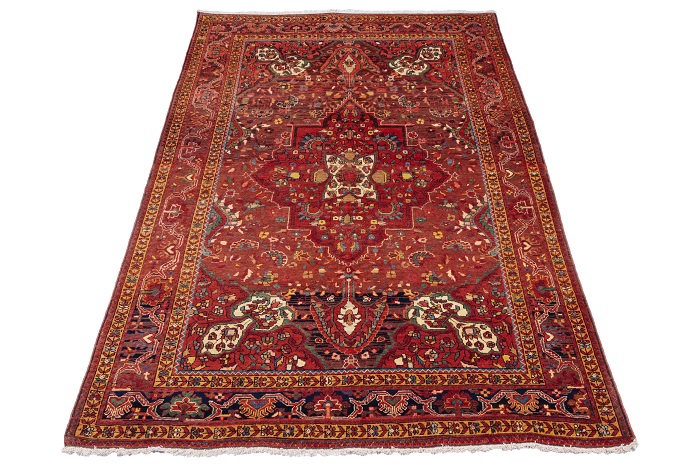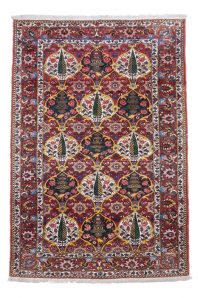- Farahan
Elegance , reserved refinement and subtlety characterise work of this area . The effect is dervied above all from the many variations of the Herati pattern in endless repeat . Farahan came to prominence in the 18th century under the rule of Shah Nadir ,. all categories of rugs and runners are produced as well as large gallery and room size carpets. the predominant colours are indigo blue , dark and other shades of green , yellow and orange – red . Black or deep blue are the finely applied outline colours . White and light brown are less frequently employed . Patterns : the carpet designs of Farahan carpets are more diverse than is commonly believed since although the repeated fish pattern is the most popular , it is by no means the only design used . Generally drawn in an infinite repeat . Mahi design can be seen in different forms .It may appear as a lattice or another time as a geometric diamond pattern separated by round or oval shapes . Both old and new pieces are made as medallion and serrated medallion carpets , the latter also known as ‘ sunburst ‘ in the trade . Finally the Gül – i – Henna motif is also a favourite Farahan pattern . The borders are often very beautiful and are usually drawn on a large scale , underlining the composition of these carpets . Apart from the typical Herati border , one also finds the dombakli and ‘ tortoise – Herati ‘ borders . warps and wefts are of strong , old and antique pieces being among the very best of Persian carpets .









Reviews
There are no reviews yet.